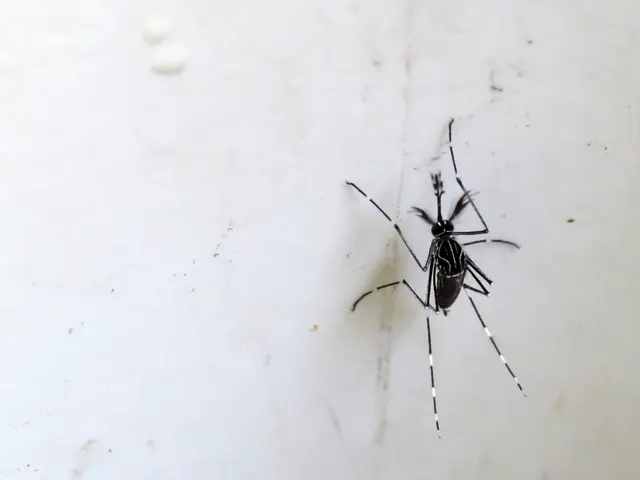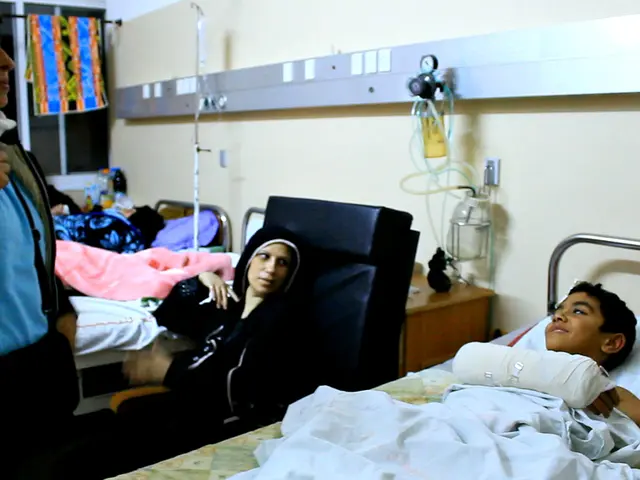Elderly woman recounts wartime experiences
In the small town of Biysk, a 95-year-old woman named Valentina Ivanovna Teplova recalls her life during a time of immense hardship and resilience - World War II. As a child, Valentina was thrust into the role of a head of her household when her mother passed away, taking care of her siblings and helping her father with farming work.
Valentina was just 11 years old when the war began, and men and young men from her village were drafted into the army. With her father left to manage the farm, Valentina and her siblings played a crucial role in maintaining their livelihood. They helped with tasks such as haystacking, threshing grain, and sugar beet farming.
The family lived in a small room in Biysk, and their radio, made by Valentina's eldest brother, was their primary source of news updates on the war. Despite the challenging circumstances, Valentina's father played the accordion during celebrations, providing a semblance of joy and normalcy in their lives.
The impact of child labor on collective farms during World War II was significant but not extensively documented. During collectivization, millions of peasants were forced onto collective farms, causing widespread famine and disruption to traditional rural life. By the time of the war, children in rural areas, including Valentina and her siblings, had increased roles in agricultural production to maintain food supplies for both the front and home front.
While official documentation on child labor during WWII in collective farms is limited, it is known that war-era rural hardships and the depletion of adult labor due to conscription forced older children to perform hard physical labor to sustain grain production. This labor helped sustain the Soviet Union’s agricultural output under extreme adversity but likely contributed to long-term detriments in child health and development.
Valentina's life was not without struggle. Two of her older brothers left for the front, one of whom never returned. Despite never completing school due to her work responsibilities, Valentina led the household "brigade" to tend to two large household plots, one for vegetables and the other for corn and pumpkins. After marrying Andrei, Valentina moved to the city of Biysk and worked on the railway.
Valentina has no regrets about her life and considers herself to have lived honestly. She found work at the Biysk city prison and later became a controller. The news of victory was received with joy by everyone in the village. Despite the worn-out and patched clothing of her husband, Andrei, Valentina loved the land and enjoyed working on it.
Valentina Ivanovna never idled for a moment and considers work necessary for living. She received housing from the penal system and retired in the mid-1980s. To this day, the 95-year-old woman remains active and resilient, a testament to the spirit of a generation that endured unimaginable hardships during World War II.
[1] Wheatcroft, S. G. (1994). The Human Cost of Stalinism: Soviet Collectivization and the Terror Famine. Yale University Press. [2] Davies, R. W. (1996). Russia's First Civil War: Bolshevik Victory and the Collapse of Cossackdom. Clarendon Press. [3] Fitzpatrick, S. (1994). Stalin's Peasants: Resistance and Survival in the Russian Village After Collectivization. Oxford University Press. [4] Davies, R. W. (1997). Russia's War for Freedom: A History of the Soviet Union at War, 1941-1945. Oxford University Press.
In the same small town of Biysk, the health-and-wellness of children like Valentina became a crucial aspect of the community's survival, as they took on fitness-and-exercise-demanding roles in agricultural work during World War II. As the research in works such as "The Human Cost of Stalinism" and "Russia's First Civil War" reveal, women's health, particularly in rural areas, was significantly impacted by these labour roles, as they endured hard physical labor to maintain food supplies, potentially leading to long-term detriments in their health and development.




